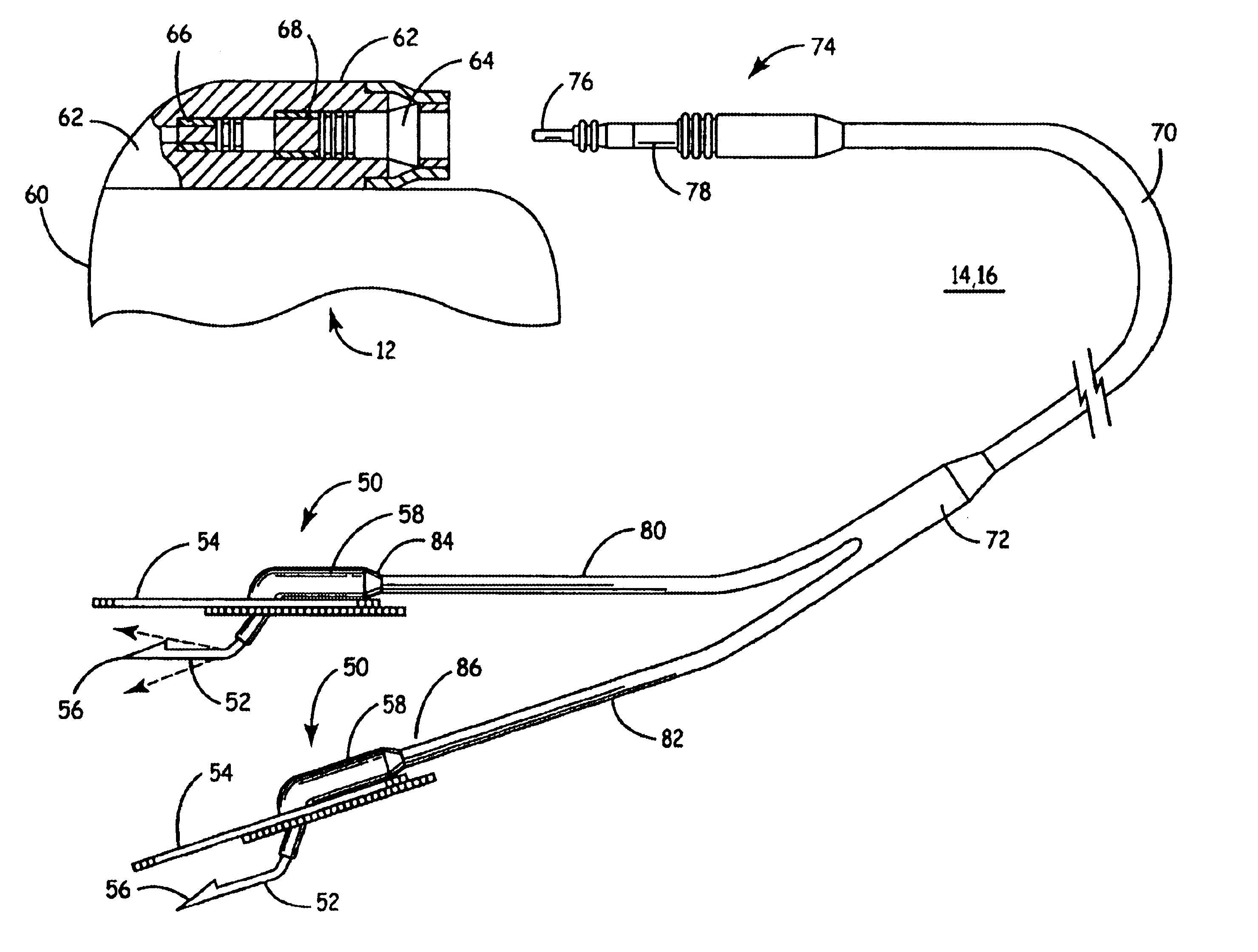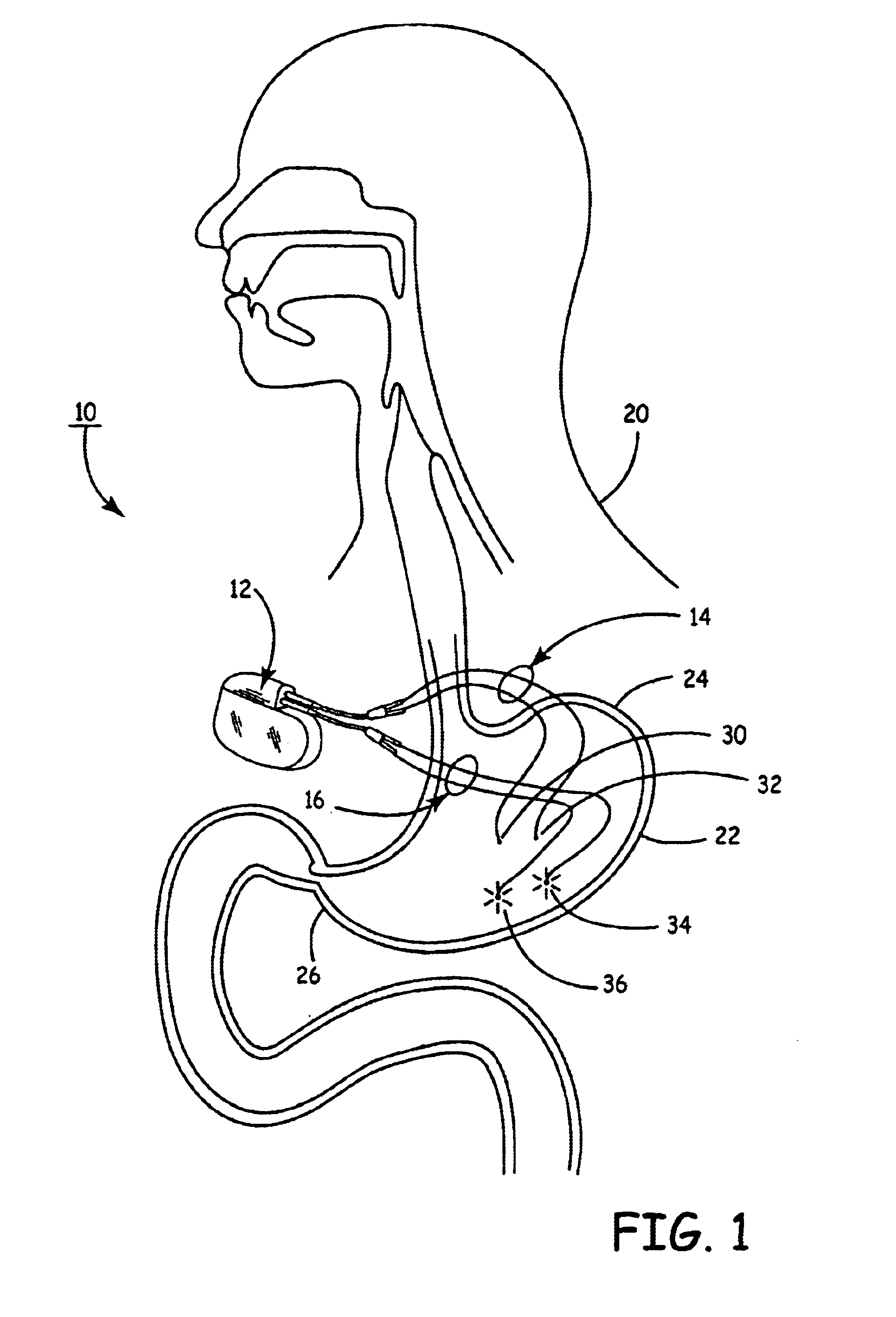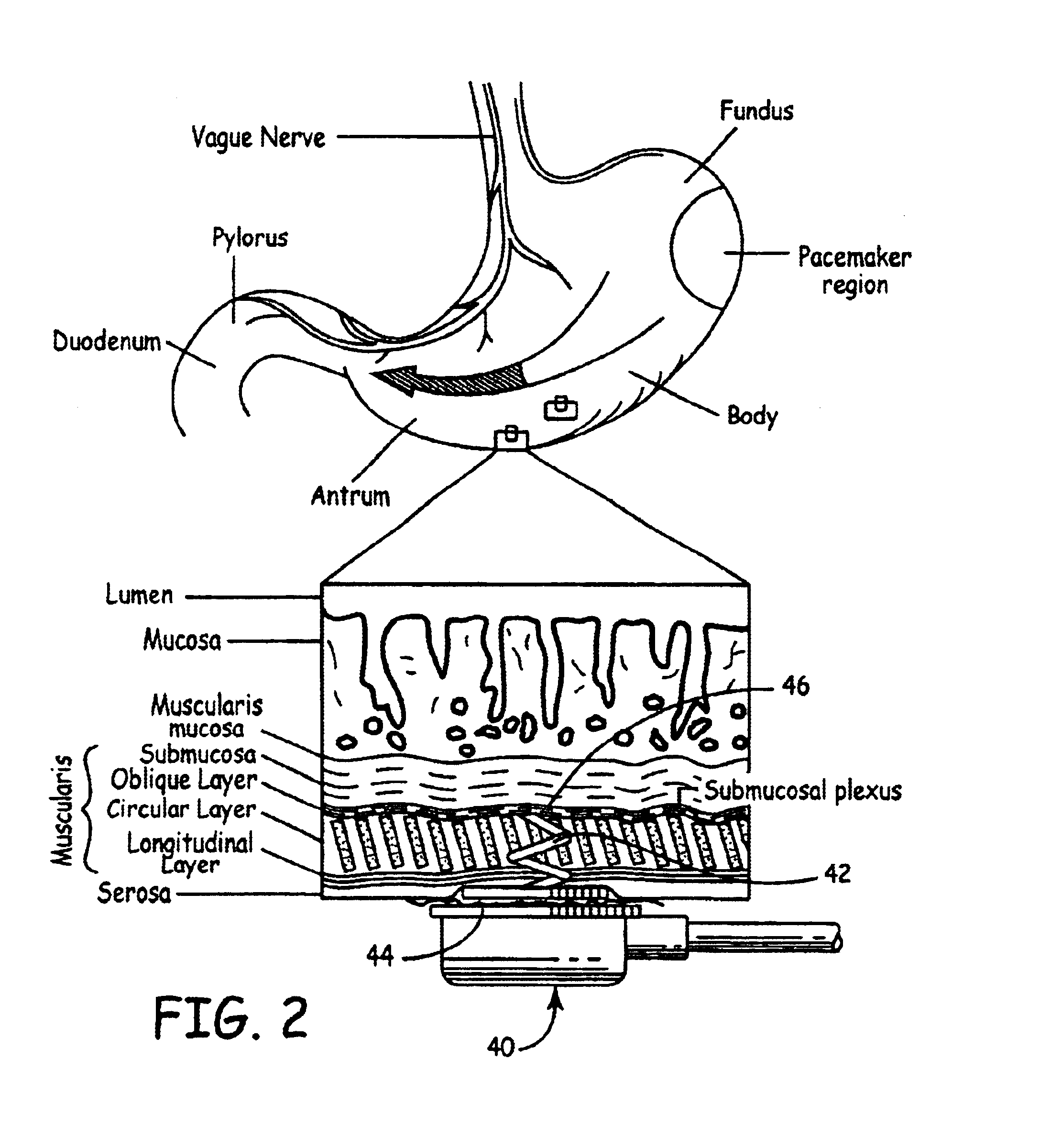Implantable bifurcated gastrointestinal lead with active fixation
a bifurcated, active fixation technology, applied in the field of gastrointestinal leads, can solve the problems of stasis, nausea or vomiting, or combination, and organ contraction, and achieve the effect of reducing the number of gastrointestinal leads, and improving the quality of gastrointestinal leads
- Summary
- Abstract
- Description
- Claims
- Application Information
AI Technical Summary
Benefits of technology
Problems solved by technology
Method used
Image
Examples
Embodiment Construction
The bifurcated bipolar leads and methods of attachment and the GI tract stimulation system of the present invention provide the surgeon with more options for electrode placement about an area of interest of the GI tract compared to the leads, methods and systems previously employed in GI tract stimulation.
A GI tract stimulation system known in the prior art from the above-referenced '955 patent, for example, comprises a neurostimulator IPG having a plurality of leads extending to sensing and / or stimulation electrodes passed through the serosa and embedded into the GI-tract wall, e.g., the muscularis externa of the stomach wall, and held there by sutures. Each of the four leads illustrated in the '955 patent apparently comprises a unipolar lead coupled to a single connector socket of the neurostimulator IPG (requiring four sockets) or an in-line pair of stimulation / sense electrodes spaced apart along the portion of the lead body drawn through the muscularis externa.
By contrast, the b...
PUM
 Login to View More
Login to View More Abstract
Description
Claims
Application Information
 Login to View More
Login to View More - R&D
- Intellectual Property
- Life Sciences
- Materials
- Tech Scout
- Unparalleled Data Quality
- Higher Quality Content
- 60% Fewer Hallucinations
Browse by: Latest US Patents, China's latest patents, Technical Efficacy Thesaurus, Application Domain, Technology Topic, Popular Technical Reports.
© 2025 PatSnap. All rights reserved.Legal|Privacy policy|Modern Slavery Act Transparency Statement|Sitemap|About US| Contact US: help@patsnap.com



